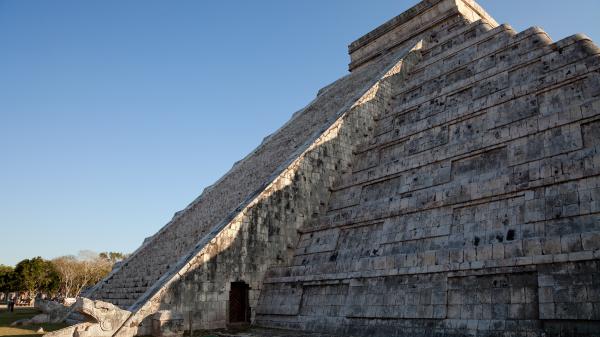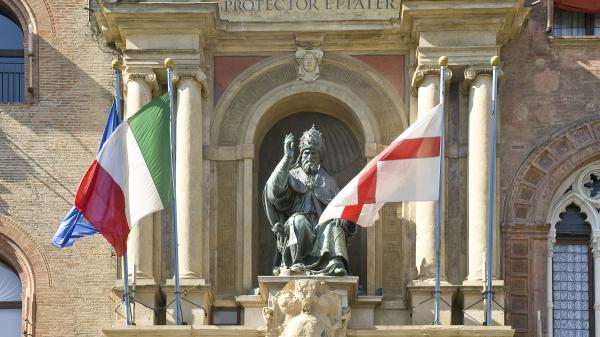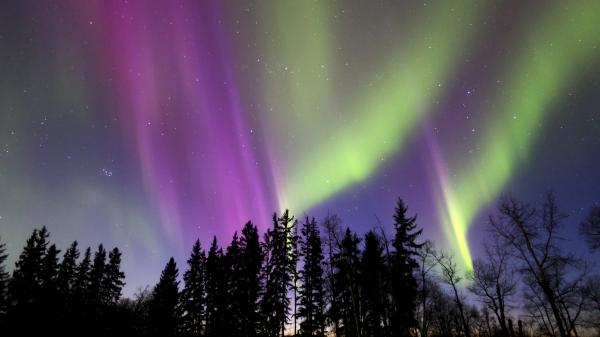10 Facts About the September Equinox
On September 22, 2024, the day and night are almost equal in most locations. Here are 10 facts about the first day of astronomical fall (autumn) in the Northern Hemisphere.

September is North's fall equinox.
©iStockphoto.com/Givaga
1. Second Equinox of the Year
The September equinox is on or around September 22, while the first equinox of the year, the March Equinox, takes place on or around March 21 every year.
2. Say Goodbye to Summer...
...in the Northern Hemisphere. Astronomically, the September equinox is the autumnal, or fall, equinox marking the end of summer and the beginning of fall (autumn). The fall season ends on the December solstice, when astronomical winter begins.
Meteorological vs. astronomical seasons
For meteorologists, on the other hand, fall in the Northern Hemisphere begins about 3 weeks before the September equinox on September 1 and ends on November 30.
3. And Welcome Spring
In the Southern Hemisphere, the September equinox is the vernal (spring) equinox.
The September equinox is also known as the vernal or spring equinox in the Southern Hemisphere and is considered by astronomers as the first day of spring there.
4. A Moment in Time
Equinoxes & solstices local times

The staircases at the main Maya pyramid, El Castillo, at Chichen Itza, Mexico, are built at a carefully calculated angle which makes it look like a snake of sunlight slithers down the stairs the moment the equinox occurs.
©bigstockphoto.com/Borna
Equinoxes are not day-long events, even though many choose to celebrate all day. Instead, they occur at the moment the Sun crosses the celestial equator—the imaginary line in the sky above Earth’s equator.
At this instant, Earth's rotational axis is neither tilted away from nor toward the Sun.
Earth's axial tilt is the reason
In 2024, the Sun crosses the celestial equator from north to south on September 22, at 12:43 UTC. Because of time zone differences, the equinox takes place on September 23, 2024 at locations that are at least 11 hours and 17 minutes ahead of UTC at the time of the equinox. This includes cities in New Zealand and some areas in the western Pacific Ocean.
5. The Date Varies

Statue of Pope Gregory XIII Bologna, Italy.
©iStockphoto.com/ppl58
While the September equinox usually occurs on September 22 or 23, it can very rarely fall on September 21 or September 24. A September 21 equinox has not happened for several millennia. However, in the 21st century, it will happen twice—in 2092 and 2096. The last September 24 equinox occurred in 1931, the next one will take place in 2303.
The equinox dates vary because of the difference between how the Gregorian calendar defines a year (365 days) and the time it actually takes for Earth to complete its orbit around the Sun (about 365 and 1/4 days).
This means that each September equinox occurs about 6 hours later than the previous year's September equinox. This eventually moves the date by a day.
Note: These dates are based on the time of the equinox in UTC. Due to time zone differences, locations ahead of UTC may celebrate the September equinox a day later, and locations behind UTC may celebrate it a day earlier.
6. Equal Day and Night...

Most locations on Earth do not experience equal day and night on September equinox.
©iStockphoto.com/YiuCheung
The term equinox comes from the Latin words aequus, meaning equal and nox, meaning night. This has led to the common misconception that everybody on Earth experiences equal day and night—12 hours of daylight and 12 hours of night time—on the day of the September equinox.
7. ...But Not Quite
In reality, most places on Earth enjoy more than 12 hours of daylight on this day. This has two reasons: the way sunrise and sunset are defined and the atmospheric refraction of sunlight.
Locations that are not on the equator do get to experience equal day and night twice a year, usually a few days before or after the equinoxes. The dates for this event, which is also known as equilux, depend on a location's latitude—those south of the equator celebrate it a few days before the equinox, people in the Northern Hemisphere reach the equilux a few days after the equinox.
8. Shorter Time Between Moonrises

The Harvest Moon is also sometimes called Corn Moon, after the corn harvest in the months of fall.
©iStockphoto.com/klagyivik
The full Moon closest to the September equinox, the Harvest Moon, is astronomically special. This is because the time from one moonrise to the next becomes shorter around this period.
On average, the Moon rises about 50 minutes later every day in a lunar month—the time period between two Full Moons or two New Moons. Around the Harvest Moon, the time difference between two successive moonrises decreases to less than 50 minutes for a few days.
Known as the Harvest Moon Effect, this phenomenon occurs due to the low angle the Moon's orbit around Earth makes with the horizon during this time of year.
The reverse effect occurs in the Southern Hemisphere, where the Moon rises more than 50 minutes later than on the previous day.
In the old days, the early moonrise for a few days around the equinox in the Northern Hemisphere meant that farmers could work and harvest their crops for a longer time in the evenings.

The aurora borealis can come in many colors.
©iStockphoto.com/Nata-K
9. Prepare for Northern Lights
As the September equinox rolls by, the chances to see the aurora borealis display increases for those located at high Northern Hemisphere latitudes. According to NASA, the equinoxes are prime time for Northern Lights—geomagnetic activities are twice more likely to take place in the spring and fall time, than in the summer or winter.
10. Celebrated Around the World
Many cultures around the world hold feasts and celebrate festivals and holidays to mark the September equinox.